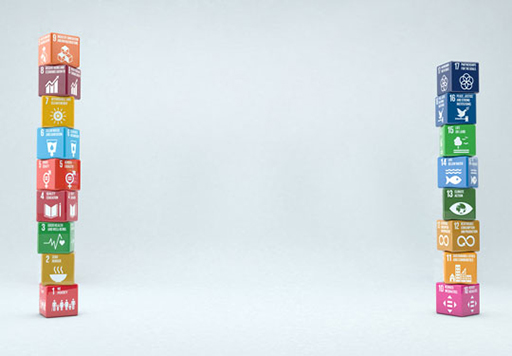4 Using AI for social good
Earlier sections in this unit focused on concerns about the risks of using AI technology and ways of reducing the likelihood of harms arising from the use of such technology. However, it is important to pause and consider a more balanced view of AI technology. As pointed out already, AI technology is at a relatively early stage of development, although it is developing quite rapidly. We should expect that at such early stages, it will become much clearer where the technology is going wrong, certainly more so than where it is succeeding. However, just as the impact of harms from AI are significant given the scale of its adoption, it needs to be acknowledged that there are growing indications of the huge potential for significant benefits from such technology, across almost all sectors in society, from healthcare and education, to retail, transport and agriculture, and far beyond. One key indication of such benefits is its role in accelerating the United Nations’ 2030 Agenda for Sustainable Development. The global reach of this Agenda is matched by the scale of adoption of AI technology (facilitated by the internet and associated technologies). In this respect, AI technology offers an opportunity to more fully realise the UN’s calls for action in this Agenda. Efforts to raise awareness of these opportunities are being driven by a variety of organisations and groups, which includes the ‘AI for Social Good’ (AI4SG) movement.
In the activity for this section, you will briefly explore a sample of recent efforts by various AI technologists to increase social good through their work, specifically in the areas of education, transport, healthcare and the arts. While we will only touch on work in these areas, such work is in fact quite extensive.
Activity 8
A key member of the ‘AI for Social Good’ (AI4SG) community is the International Telecommunication Union (ITU), which is the United Nations specialized agency for information and communication technologies (ICTs). Applications of AI are central to ICTs, and the ITU has been a global leader in this area. For this activity, you will choose one of the following outline news articles from the ITU to examine in more detail.
- Education [Tip: hold Ctrl and click a link to open it in a new tab. (Hide tip)] (Chklovski, 2020)
- Transport (Cheli, 2020)
- Healthcare (Wray, 2020)
- The Arts (ITU, 2020)
From the article you have chosen, you are to carry out the following tasks:
- Clearly describe what challenge was solved by using AI?
- For the solution detailed in this article, make a list of potential social and sustainability benefits (aim for at least three).
- Choose your top three benefits, based on the following criteria, and make sure to provide evidence for your answers:
- Which had the greatest impact?
- Which are the most desirable benefits?
- Which solution is the easiest to implement?
Use the free response box below to put together your answer.
Discussion
Your answers here will be somewhat subjective. However, make sure to save what you have written down here (e.g. in the free response box).
Another aspect of AI for social good that you might like to examine is where AI researchers are linking their work to so-called sustainable development goals. Try doing a google search for ‘AI and sustainable development goals’.
As a way of following up this activity, try to find an example of ‘AI for good’ of your own. A good place to start is the UK’s Ada Lovelace Institute.

